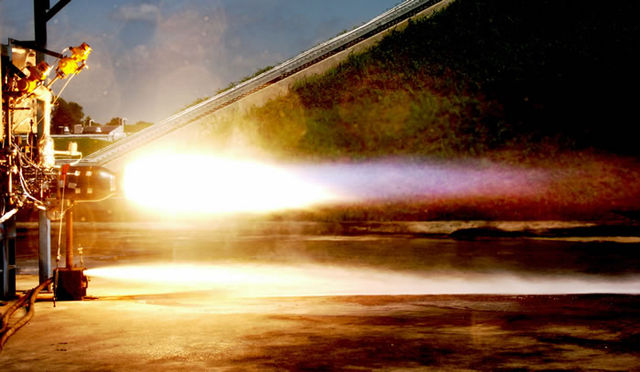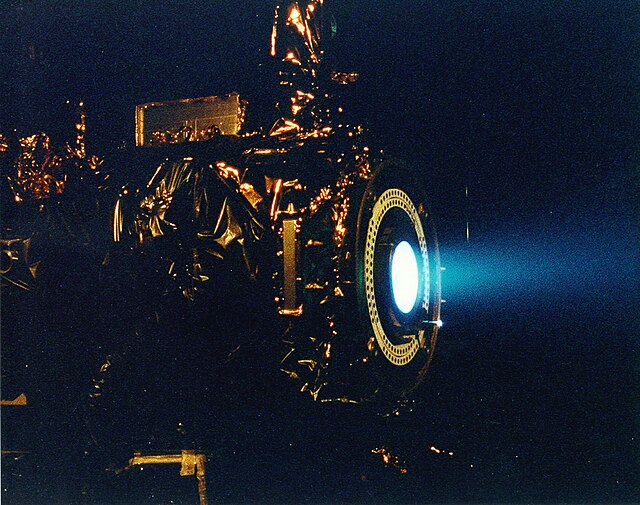Space tethers are long cables which can be used for propulsion, momentum exchange, stabilization and attitude control, or maintaining the relative positions of the components of a large dispersed satellite/spacecraft sensor system. Depending on the mission objectives and altitude, spaceflight using this form of spacecraft propulsion is theorized to be significantly less expensive than spaceflight using rocket engines.
Artist's conception of satellite with a tether
Graphic of the US Naval Research Laboratory's TiPS tether satellite. Only a small part of the 4 km tether is shown deployed.
Medium close-up view, captured with a 70 mm camera, shows Tethered Satellite System deployment.
Spacecraft propulsion is any method used to accelerate spacecraft and artificial satellites. In-space propulsion exclusively deals with propulsion systems used in the vacuum of space and should not be confused with space launch or atmospheric entry.
A remote camera captures a close-up view of an RS-25 during a test firing at the John C. Stennis Space Center in Hancock County, Mississippi.
SpaceX's Kestrel engine is tested.
NASA's 2.3 kW NSTAR ion thruster for the Deep Space 1 spacecraft during a hot fire test at the Jet Propulsion Laboratory
6 kW Hall thruster in operation at the NASA Jet Propulsion Laboratory







